Genre: Run-‘n-Gun Publisher: Strictly Limited Games/Columbus Circle Developer: Digital Illusions CE Players: 1 Released: 2019
So, Ultracore finally arrived. Originally known as Hardcore, it was actually developed in the early ‘90s by the Swedish studio DICE, first for the Amiga and then for the Mega Drive (and Mega CD), before being cancelled by the publisher Psygnosis when it was 99% done (ironically, Psygnosis are thanked for being “very patient” in the credits). In March 2010, nearly a decade before this writing, a video demonstrating Hardcore was uploaded to YouTube. It showed the game at a demo party, where a developer talked a bit about it and that they aimed to get the rights to it back from Sony (who bought Psygnosis in 1993, which kind of also explains the game’s cancellation). Fast forward to last year, and the guys had finally managed to do so, but the game was only to be released on the PlayStation 4 & Vita, Nintendo Switch and Mega SG. I was disappointed to say the least, wanting to play it on my Mega Drive. A few months passed, and Strictly Limited Games and later Columbus Circle announced they’d both (independently from each other) release a cartridge version of Ultracore, as it was now known as for copyright reasons.
I don’t know what hardware the former uses, but Columbus Circle apparently lack five-volt regulators in their cartridges, which according to people who know tech stuff better than me, can harm the cartridge and possibly your system as well. So you may want to play the game through… other means, ahem, as Strictly Limited Games prefer to keep their audience as small as possible and don’t make reprints. Having played both versions, they seem exactly the same except for the corporate notices which greet the players as they boot the game.
Ultracore takes place exactly 80 years from now, when mankind finally has conquered space, or at least some minor parts of it. During the exploration of a foreign planet, private H.C. receives an emergency call from a military outpost. Captain Vance, a meddlesome fellow with incorrect basic values, has taken over the place. You need to stop him, or else! Needless to say, this game isn’t played for the story.; however, I must commend the effort in the attempt to create a coherent setting and narrative, with beautifully drawn cut scenes providing a welcome break every now and then as you search for Vance.
The game plays similarly to the Turrican series in the sense that you do not only run-‘n-gun your way through the game but also explore the levels to find secrets. The level design has a big emphasis on that. Ultracore takes it a step further by including locked doors, key cards, and passwords you need to find to progress. Though Ultracore also includes bombs, the weapon system is a bit different here; only your standard weapon is unlimited in use. The rest of the weapons, which need to be found, all use the same ammo, which is expended rapidly. The weapons include a classic spreadshot, useful when fighting swarms of minor enemies, and a rocket launcher that does heavy damage and is perfect for bosses. A great feature is the upgrade for your weapons that you find here and there among the levels. One annoying feature with the time limit is that it doesn’t reset when you die. So if you die from low health when the time is near to run out and you don’t find extra time, get ready to lose another life.
The controls have a lot to offer players. They take a bit of time to get used to, but once you do they will feel natural. Like in Contra: Hard Corps, you can switch between two modes to either run and shoot simultaneously or stand and aim in eight directions. Another mode, where you run back and forth with left and right and aim up and down with the D-pad, is also available and useful. Having the switch option available mid-game is more than welcome because enemy placements often encourage either mode for attacking them. Another big plus is the six-button controller support, which helps you switch weapon or use bombs with a single button press. A few flaws with the controls are worth mentioning. You cannot jump when holding the D-pad in the diagonals, which will, for example during platforming sections mentioned later, often lead to death. The game also encourages you to jump on enemies to reach places higher up, but this doesn’t quite work as intended as is a bit frustrating to pull off.
The graphics are among the very best the system has ever seen. First and foremost, the palettes manages to maintain a consistent hue throughout the game, which applies to both backgrounds and sprites. Everything fits naturally together and somehow looks both gritty and colourful at the same time. The visual effects are impressive. The screen flashes red when explosions occur and airborne enemies descend and crash before they are omitted. Small details perhaps, but they add a lot to the overall experience. The environments usually consist of damaged and worn sci-fi bases, populated by mechanically-moving robots (how else would they move?), weapons and many traps.
It seems like the team has aimed to create a hard sci-fi setting aimed at a bit older audience. You could say that Ultracore is the complete opposite of Gunstar Heroes in that regard, as it is also grittier, more detailed and textured all around. Though assets get reused in the various levels, it always feels like the VRAM is maxed out. Being forced to keep the game at 8Mbit, the team hadn’t as much room for variety as other developers, so I can’t hold them back for pretty much the only lacking aspect of the visuals.
The music is fantastic. Composed by Olof Gustafsson of Pinball Dreams/Illusions/Fantasies fame and powered by the Zyrinx engine by Jesper Kyd, the game features an Amiga-esque synth soundtrack with arpeggios and mechanical rhythms rarely heard on this system. I’d say that Kyd’s own soundtracks, like Sub-Terrania and Red Zone, are the only ones that sound similar. The tunes are filled with long dystopic melodies, often changing lead instruments and employing neat panning effects here and there. Too bad there is no sound test! The only gripe I have with the OST is that it doesn’t feel written to convey emotions or to fit any particular scene, at least not during the levels. But being a straight ahead action game with focus on just that and not the narrative, it’s a bagatelle. The sound effects get the job done with juicy explosions and distinct metal plunks.
Unfortunately, while Ultracore excels in graphics and audio, it falls behind in other areas. The UX has numerous issues, most notably the password screen. When using it, instead of having all letters and numbers selectable on rows on the screen, you need to cycle through all of them, forcing many more button presses. Even worse is that the game erases your whole password if a single digit is incorrect, forcing you to type it all over again if for example you mistook a five for an S. Additionally, I noticed three bugs. One was graphical and caused no bigger problems. Another one blocked me from getting some secrets. The last one kept a boss hiding, so I had to sacrifice an entire continue to restart the level. Each of them only happened once though, and I have played through the game twice.
However, the biggest fly in the ointment is the level design. While the development team has managed to make the levels look varied and encouraged exploration in the design, other parts of it makes the game very frustrating at times. You don’t know if doors lead to bosses or to secrets, and there is no way to backtrack, so prepare to memorize the levels if you don’t want to miss stuff when re-playing them. Exploring often comes at the cost of many leaps of faith, which sometimes lead to secrets but more often to a quick death. This is most likely expected from the designers, as extra lives are given out like free candy, so we could say you give some and take some. Enemies are often placed close to ledges you need to jump to, so many hits you take are impossible to avoid. Two bosses near the end have camera issues, meaning the danger or objectives won’t be viewed unless you jump so the screen scrolls and adjusts the view field for you.
Worst of all, though, are the jumping sections. Around once per big area you will encounter some aggravating platforming sections, where precise timing and mastering of the controls and physics are mandatory. Failing always means death, and there are no beginner parts where you can train to become better at them. Becoming good at one is worthless at the next. Mega Man-esque appearing and disappearing platforms is one obstacle, another is a vast chasm from where countless robots ascend. You need to jump on them, with dodgy hit detection as your only friend to reach the next platform. Despite their existence, I did manage to beat the game, and once I had done so and tried it again, they were easier to handle.
One thing worth mentioning are the top-down vehicle levels that were dropped. There were talks about restoring them for this release, but they are unfortunately nowhere to be seen, though the narrative seems written with them in mind. It seems like they will be exclusive to the current generation console version. Too bad!
I had longed many years for Ultracore. It felt a bit extra special to me, loving run-‘n-guns and being a Swede myself, like the team behind it. Now that it has arrived, I must admit that I was a bit disappointed the first time I played it. I did go back to play it after I beat it though, and the issues I had with the level design weren’t as big then. But having them, as well as the other minor issues which stack up, Ultracore isn’t quite the masterpiece I expected, though still definitely one of the better after-market Mega Drive releases thus far. I’d say it’s a bit better than Mega Turrican, but not on the same level as the two Treasure run-‘n-guns on the console. The state-of-the-art audiovisuals and plentiful gameplay features combine into a beautiful and extravagant action-fest which should not be missed. Hopefully, Ultracore will, along with the recently released Xeno Crisis and Tanglewood, be remembered as a classic swansong of the 2010s for the Mega Drive. If anything, it will be an example of a lost treasure which despite all the odds managed to get released after a quarter of a century.
SCORE: 8 out of 10

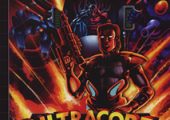
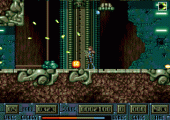
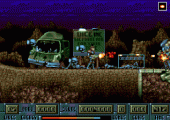
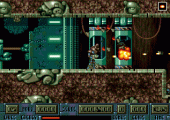
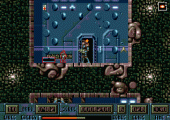
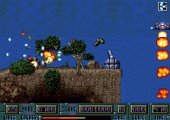
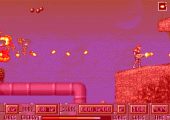
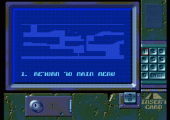
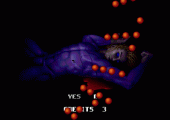
Recent Comments